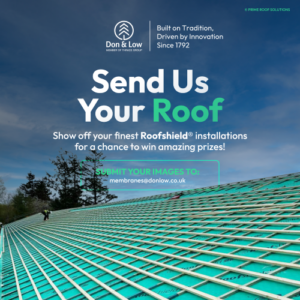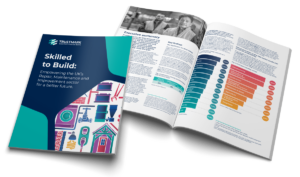2 mins

Award-winning architect Des Ewing, chooses the BMI Redland Heathland Ember plain tiles when he designed Hastings House, a substantial property overlooking the Belfast Lough.

The BMI Redland Heathland Ember is a concrete plain tile featuring variation in hanging length, irregular sides and subtle surface texturing, finished with randomly applied fine sands. The result is a tile that combines a natural weathered character with the performance of a machine-made tile.
“The roof is a strong feature of this house, so it was essential that the roofing material chosen blended in with the overall design and all the other finishes that are employed, particularly the brick and render,” says Des.
“This roof tile ticked all the boxes and was also used in decorative details that bind the entire house into a unified whole rather than discrete elements attached to one another. These details include tiles on the sides and front of dormers, shoulders of the chimneys and a soldier course in the arch above the entrance.”
The 550 sqm roof uses the ‘small element’ tile to achieve a complex overall roof shape that incorporates varying rafter pitches, vertical cladding and unusual details such as bellcast eaves and bonnet hips.
The roof pitch reduces as it slopes down, so there are no straight rafters from ridge to eaves, while the building itself is in a T-shape that is at an angle rather than square, adding to the complexity of the design and installation.
There are four dormers, which necessitated vertical cladding to their cheeks and careful detailing where the cladding met the main roof. The cheeks of each dormer had four different perimeter pitches requiring careful setting out and use of tile and half to avoid small cuts, which look unsightly and are vulnerable to wind damage.
The bellcast eaves required careful setting out to ensure even courses particularly where there were unequal pitches either side. The roof also incorporates an area of flat roofing, so close co-operation was required between the tradesmen to ensure correct weathering where the two roofing systems met.
More practically, the fixing specification considered the coastal site and the low pitch of the roof at the eaves. Both factors increase the risk of wind lift, so the tiles were double-nailed every fourth course—rather than every fifth as they would have been ordinarily—a result of BMI UK and Ireland’s rigorous design approach.
Unlike the handmade clay tiles it mimics, the modern BMI Redland Heathland Ember plain tile has undergone a robust programme of testing, subjected to driving winds and high rains, whipped up by BMI UK & Ireland’s engineers in the company’s testing wind tunnel. The tiles meet all the requirements of BS 5534: 2014 Code of Practice for Slating and Tiling, providing they are installed in compliance with BMI Redland’s fixing recommendations.



